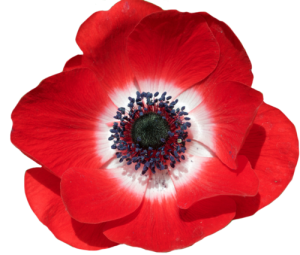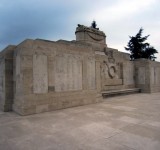Personal Details
Jacob Griffiths was born in Whitchurch, Shropshire in 1886, the third son of Jacob and Sarah Ann Griffiths of Folly Lane, Yardington, Whitchurch, Shropshire.
Husband of Amy Griffiths (née Hinds) of Gorton, Manchester and father of Amy.
Military Details
Regiment : 1st Battalion Cheshire Regiment 'D' company
Rank : Private
Service Number : 7597
Jacob joined the 3rd Shropshire Light Infantry on 3/12/1903 aged 17 Service Number : 4822, transferring to the Cheshire Regiment in 1904 aged 18 Service Number : 7597
He was called up from being a reservist during the general mobilisation in August 1914, landing in France on 16/8/1914 as part of the British Expeditionary Force 1st Battalion Cheshire Regiment 'D' Company.
Killed in Action France 24th August 1914

The 1914 Star (also known as 'Pip') was authorised under Special Army Order no. 350 in November 1917 and by an Admiralty Fleet Order in 1918, for award to officers and men of the British and Indian Expeditionary Forces who served in France or Belgium between 5 August and midnight of 22–23 November 1914. The former date is the day after Britain's declaration of war against the Central Powers, and the closing date marks the end of the First Battle of Ypres.
The 1914–15 Star (also known as 'Pip') was instituted in December 1918 and was awarded to officers and men of British and Imperial forces who served against the Central European Powers in any theatre of the Great War between 5 August 1914 and 31 December 1915. The period of eligibility was prior to the introduction of the Military Service Act 1916, which instituted conscription in Britain.
The British War Medal (also known as 'Squeak') was a silver or bronze medal awarded to officers and men of the British and Imperial Forces who either entered a theatre of war or entered service overseas between 5th August 1914 and 11th November 1918 inclusive. This was later extended to services in Russia, Siberia and some other areas in 1919 and 1920. Approximately 6.5 million British War Medals were issued. Approximately 6.4 million of these were the silver versions of this medal. Around 110,000 of a bronze version were issued mainly to Chinese, Maltese and Indian Labour Corps. The front (obv or obverse) of the medal depicts the head of George V. The recipient's service number, rank, name and unit was impressed on the rim.
The Allied Victory Medal (also known as 'Wilfred') was issued by each of the allies. It was decided that each of the allies should each issue their own bronze victory medal with a similar design, similar equivalent wording and identical ribbon. The British medal was designed by W. McMillan. The front depicts a winged classical figure representing victory. Approximately 5.7 million victory medals were issued. Interestingly, eligibility for this medal was more restrictive and not everyone who received the British War Medal ('Squeak') also received the Victory Medal ('Wilfred'). However, in general, all recipients of 'Wilfred' also received 'Squeak' and all recipients of The 1914 Star or The 1914/1915 Star (also known as 'Pip') also received both 'Squeak' and 'Wilfred'. The recipient's service number, rank, name and unit was impressed on the rim.
Further Information
| 03:00 | C’ & ‘D’ Coys rejoined ‘A’ & ‘B’ Coys |
| 08:00 | The Manchester Regt. relieved us |
| 10:00 | The Battalion marched to Dour Station arriving there at 11.45 a.m. |
| 11:45 | The G.O.C. 5th Division gave Col Ballard, Norfolk Regt, orders to take the Cheshire Regt, Norfolk Regt and 119th Battery and take up a position N. West along the Elouges – Audregnies road and act as a flank guard to the Manchesters and the troops entrenched round Wasmes in their retirement. |
| 13:00 | In position Norfolk right on the Railway Embankment. Cheshire right on the 4th Kilo stone. ‘D’ Coy Cheshire left, ‘D’ Coy holding the village of Audregnies – Order of Coys ‘B’, ‘A’, ‘C’ ‘D’. Masses of the enemy were seen moving out of Quievrain and their artillery and machine guns opened a very hot fire on the Infantry and Cavalry and R.H.A. who were operating against the German Cavalry in the valley 1¼ miles to the S.E. of Quievrain. |
| 14:30 | I am informed Col Ballard gave orders for all troops to retire in an Easterly direction – these orders never reached the 2 front platoons of ‘D’ Coy under command of Capt W S Rich, who held on to the position he had reached in front of the line till 4 p.m. by which hour all troops had retired. Lieut W G R Elliot behaved with great gallantry in returning during the retirement and carrying away a wounded man under intensely hot fire, he being shot through ankles when within 3 yards of the sunken road to which he eventually took this man – Lt Elliot was left on the field (witness Corporal Oford, 1/Cheshire Regt) |
| 16:45 | About 100 men were collect in Athis |
| At roll call in Bivouac at Les Bavay there were 6 Officers, a Warrant Officer and 199 men – The strength marching out at 7.30 a.m. on the morning of 24th inst was 27 Officers, 1 Warrant Officer and 933 men – A loss of 78% most of which was caused in the withdrawal. |
Information from Grandad’s War website
If you can provide any further information on Jacob Griffiths please get in touch by leaving a comment below, using our Contact Form or by calling in to Whitchurch Heritage Centre.
Information provided by Terry Evanson Whitchurch, Shropshire and Whitchurch Museum and Archives


